12th Annual Congressional Civil Rights Pilgrimage
Posted March 6th, 2012 by Katrina BrowneCategory: History
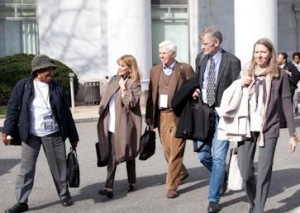 I had the incredible opportunity and honor to participate in the 12th annual Civil Rights Pilgrimage to Alabama this past weekend sponsored by the Faith & Politics Institute and hosted by Congressman John Lewis. We visited Birmingham, Montgomery and Selma – going to the specific sites of so many defining moments in the Civil Rights movement. The delegation included 17 members of Congress from both parties; civil rights leaders in addition to Congressman Lewis: Dorothy Cotton, Rev. Dr. Bernard Lafayette, Bob Zellner; John Seigenthaler (who represented Robert F. Kennedy as intermediary between fed. govt., freedom riders, and segregationist state officials), Ethel Kennedy and Kerry Kennedy; Bill Plante (who covered the events in Alabama and Mississippi in 1965 for CBS); Ruby Bridges (the first black child to integrate a white school). There were c. 240 of us in total on the Pilgrimage – from government, the private sector, the non-profit sector, universities, religious institutions, etc. It was a remarkable group of people (including a youth contingent) to spend 3 days with absorbing lessons from these landmark dates and places.
I had the incredible opportunity and honor to participate in the 12th annual Civil Rights Pilgrimage to Alabama this past weekend sponsored by the Faith & Politics Institute and hosted by Congressman John Lewis. We visited Birmingham, Montgomery and Selma – going to the specific sites of so many defining moments in the Civil Rights movement. The delegation included 17 members of Congress from both parties; civil rights leaders in addition to Congressman Lewis: Dorothy Cotton, Rev. Dr. Bernard Lafayette, Bob Zellner; John Seigenthaler (who represented Robert F. Kennedy as intermediary between fed. govt., freedom riders, and segregationist state officials), Ethel Kennedy and Kerry Kennedy; Bill Plante (who covered the events in Alabama and Mississippi in 1965 for CBS); Ruby Bridges (the first black child to integrate a white school). There were c. 240 of us in total on the Pilgrimage – from government, the private sector, the non-profit sector, universities, religious institutions, etc. It was a remarkable group of people (including a youth contingent) to spend 3 days with absorbing lessons from these landmark dates and places.
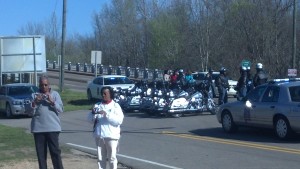 The thing that first most struck me was the level of security provided. Our buses traveled in motorcade, with streets cleared for us, and with several dozen officers present everywhere we went. It was certainly because of all the members of Congress on the trip, but as we were on a journey with civil rights luminaries, going to the sites where local and state police had been the enemy, it was a striking, tangible, symbol of how much times have changed. And after all these were members of Congress, not on a regular day, but on a pilgrimage to pay tribute to the history of the Civil Rights movement.
The thing that first most struck me was the level of security provided. Our buses traveled in motorcade, with streets cleared for us, and with several dozen officers present everywhere we went. It was certainly because of all the members of Congress on the trip, but as we were on a journey with civil rights luminaries, going to the sites where local and state police had been the enemy, it was a striking, tangible, symbol of how much times have changed. And after all these were members of Congress, not on a regular day, but on a pilgrimage to pay tribute to the history of the Civil Rights movement.
Another potent occasion that drove home the degree to which progress has been made, was the dinner hosted by the Governor of Alabama, Robert Bentley, at the State Capitol. This was where the state legislature had passed articles of secession in 1861, where Jefferson Davis was sworn in as President of the Confederacy, and where Governor Wallace had presided over staunch segregationism.
The March from Selma to Montgomery that catalyzed passage of the Voting Rights Act in 1965, had culminated at this State Capitol building. Now the pilgrimage delegation, led by John Lewis and his compatriots, were invited for the first time for a formal dinner to pay tribute to the movement. Also present was Peggy Wallace Kennedy, George Wallace’s daughter, who works on improving race relations and speaks about how Governor Wallace later apologized to the movement and directly to John Lewis. (Congressman Lewis shown here in front of portrait of Gov. Wallace.)
As someone for whom, like many liberals/progressives, it is almost gospel to be focused on “the work that still needs to be done” – I was deeply moved by how much change was accomplished in a decade. It struck me that it is almost a disservice to the incredible courage summoned and the sacrifices made by leaders and foot soldiers of the movement to talk as if not that much has changed. So much has changed. If I were older, I would know it viscerally. I now “get it” more than ever before. This doesn’t negate the incredible challenges that still exist, but it gives me an important new perspective.
I’m reading a book right now called There Goes My Everything: White Southerners in the Age of Civil Rights, 1945-1975 by Jason Sokol. It delves into the sentiments of everyday white Southerners during those years and how much they experienced their world as turned upside down. So it too shows how profound the changes were.
This book and this pilgrimage are also providing an interesting counterpoint to my usual focus: the degree to which the North was far more complicit in slavery and racism that common mythology allows. Just as it is wrong to paint the white North as wholesale heroic, it is wrong to paint the white South as wholesale racist. The book, and the white Southerners we heard from this weekend—Bob Zellner, John Seigenthaler, Congressman Spencer Bachus talking about a brave choice his father made—were proof that white people in the South did take risks and stand up for what was right, and many who didn’t were at least on the right side in their heads, but scared of repercussions for taking a stand.
 The supreme significance of courage was the ultimate message of the weekend for me. It is beyond words to describe the power of visiting the parsonage where Martin Luther King and Coretta Scott King lived as a young couple and family from 1954-1960. Dr. King had been called to serve Dexter Avenue Baptist Church in Montgomery and this is where his leadership of the movement really began in connection with the Montgomery bus boycott. He received a particularly ominous threat late one night in 1956, saying that if his family did not leave town in three days, they would be bombed. He stayed awake talking to God, and at the kitchen table, he heard God tell him not to be afraid. He later spoke of this epiphany as a turning point in his ability to lead in the face of constant threats. Their home was in fact bombed three days later, but providentially no one was hurt.
The supreme significance of courage was the ultimate message of the weekend for me. It is beyond words to describe the power of visiting the parsonage where Martin Luther King and Coretta Scott King lived as a young couple and family from 1954-1960. Dr. King had been called to serve Dexter Avenue Baptist Church in Montgomery and this is where his leadership of the movement really began in connection with the Montgomery bus boycott. He received a particularly ominous threat late one night in 1956, saying that if his family did not leave town in three days, they would be bombed. He stayed awake talking to God, and at the kitchen table, he heard God tell him not to be afraid. He later spoke of this epiphany as a turning point in his ability to lead in the face of constant threats. Their home was in fact bombed three days later, but providentially no one was hurt.
May we all have the courage of our convictions, and the vision to pursue beloved community in these days.

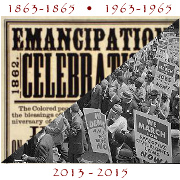

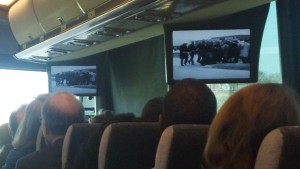
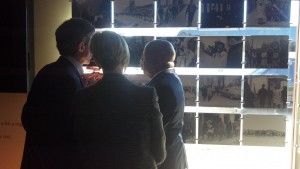
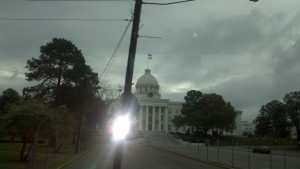
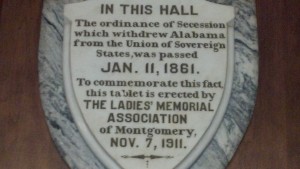
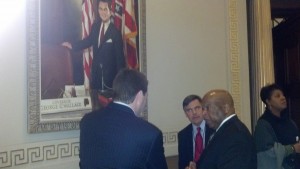
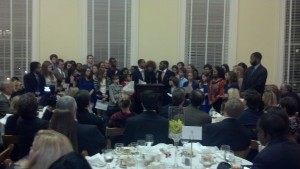

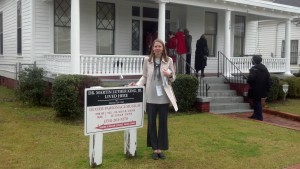

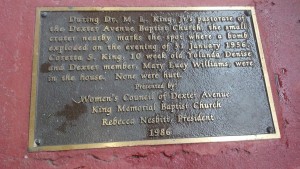
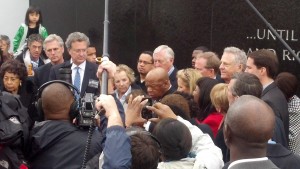
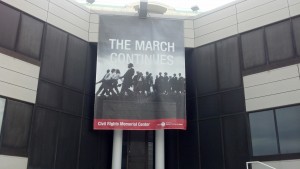
Leave a Reply